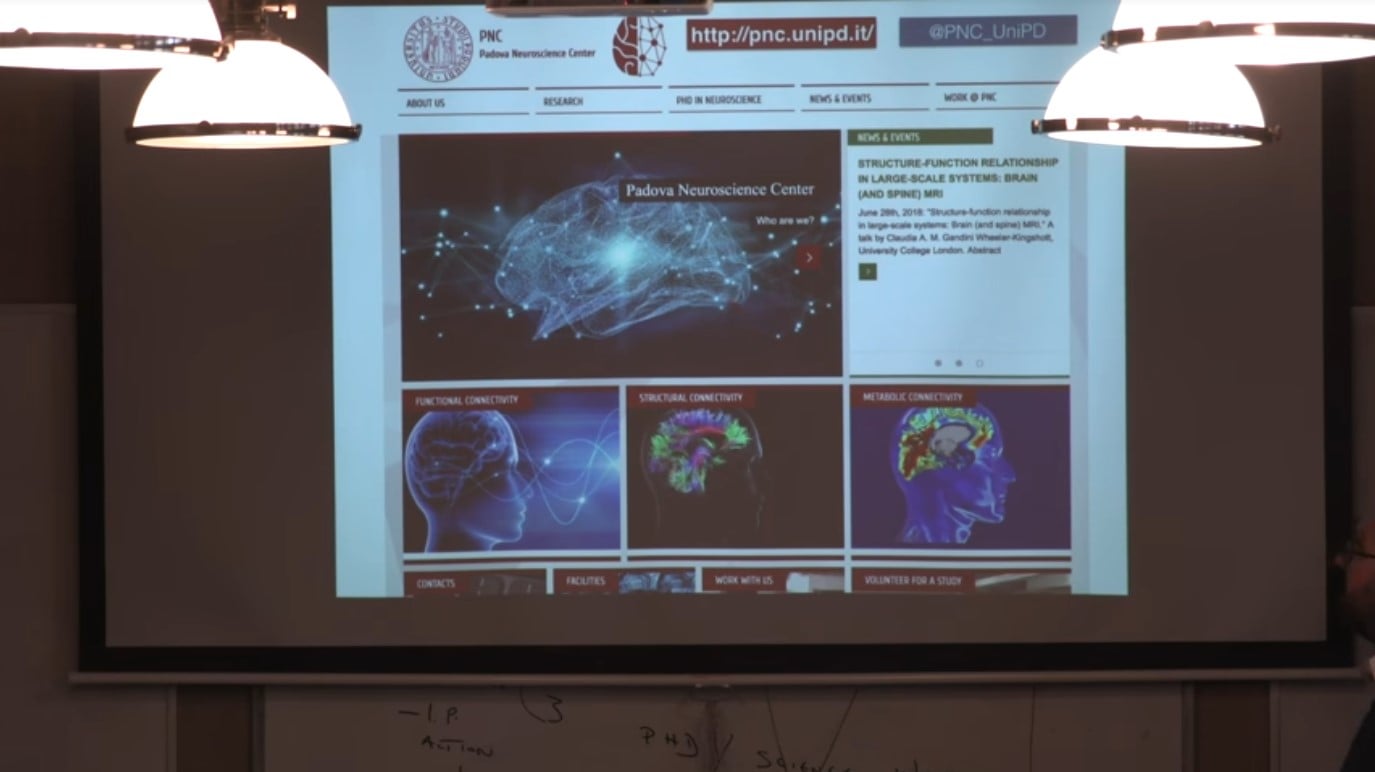Understanding the relationship between large-scale structural and functional brain networks remains a crucial issue in modern neuroscience. At the large-scale, the structural (anatomical) network of hard-wired interconnections among mesoscopic brain regions is derived from diffusion tensor or diffusion spectrum imaging (DTI/DSI), while brain activity can be accessed, among other techniques, through functional magnetic resonance imaging (fMRI). Understanding this relation would have far-reaching implications myriad clinical domains, e.g. where and how to apply transcranial magnetic stimulation for stroke recovery. From a theoretical point of view, statistical physics has contributed to quantitative description of neural activities from brain anatomic structure though minimalist mesoscopic models. In this talk I first will present a stochastic model for brain activity at resting state, incorporating homeostatic plasticity mechanisms. I will show that –consistently with other studies, the optimal inferred model for brain activity is poised a critical state and that distance to criticality provide individual-based markers to evaluate the recovery of individual brain functional activity after stroke. I will finally raise some warning and caveats on recent results suggesting the controllability of structural brain networks as a fundamental mechanism to understand brain transitions between diverse cognitive states.
Samir Suweis: Simple (But Not Too Simple) Models To Investigate Complex Brain Dynamics
Q4 hedge fund letters, conference, scoops etc
Transcript
So everything started because in the last two years ago we have this new parliament aerospace center. Where the director is working. He's gone Seanie move to Italy and he really pushed to have into the ship many collaborators are working the same. So we have started this adventure in working in the narrow science set. Typically the center is focused on the human brain. And the most experimental activity. And today I'm going to basically introduce a simple model of. Brain resting states. In particular we are interested to understand how we and how we can possibly structure an atomic funny anatomical connectivity to function functional activity and there in particular the model that we present these are the means of escape into some kind of interacting particle model and that we show you that. Then the nice thing is that we have we don't have it like free promethazine these models so he's some kind of imagined bottom that we can describe and actually tell something about the actual time and day and then we show you some working on we really the go to our CHA in Brasilia where we are trying to understand how to apply this model also to stroke patients.
And finally I will make the point on bring immediately so from a theoretical point of view. What many. Experimentalists are interested in to play with the models is that if we can start from the structure of brain activity. To okay with the presentation of these worker to functional activity that will show you how we can measure dysfunctional activity for the individual object. So not on groups average group of people. But on the wall and also to make some prediction against feet. I mean typically we share in the moment that we have many free. But I mean these models so. It's possible to do actually feat. But I mean in order to describe the specific functional activity about that in general it's really tough to make any kind of protection out of science. Yeah yeah. I will show you I will show you what the. Into is like. So basically is the dynamics of the brain interesting state that we show you more detailed. So the first point that. One has to. Tackle is how this the level of complexity in the outside world we have. Large range of different models depending on the spatial them part of the solution we are interesting.
We are interested and of course we can go from simple mandala like me feel there where we have just basically excitatory neurons that are grouped together some kind of field. And so we that result in a very simple I mean reach about the sum how simple equations we can work with the interacting particle moderates and we saw some statistics stochastic roadster and of course then we go we can increase the complexity try to describe the different role of different neurons together these molecules to mimic a kind of brain a network or actually we can just put all the details make logical we know in the model. And of course up to the Blue Brain Project Well they basically want to simulate an actual part of the brain that basically putting all ingredients that they know about the humans and the very very eye and the special spatial temporary solution. So of course dealing with these very complex models. Some age is about the most of the time then you can really understand what's going on and in particular we know that depending on the quality of the data and of course on the research question that we want to make a we can we have to somehow discriminate the kind of models and in particular the more complex models are the ones that are most using competition or science. I will basically talk about some simple but not the simple math that typically. I mean we're using statistical physics to understand the meaning gradient of some kind of emergent pattern that we want to describe. And in particular the relation between the structure. And function is something that is very important is that of course






